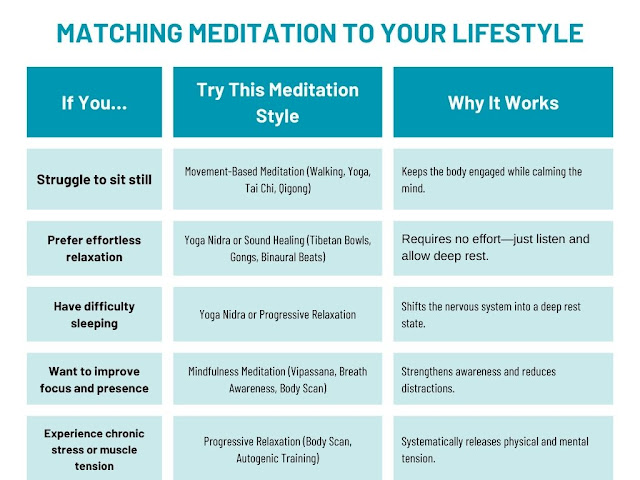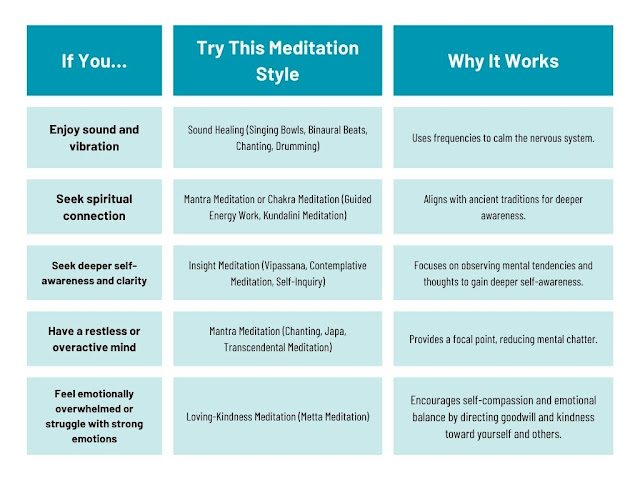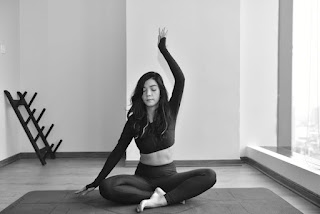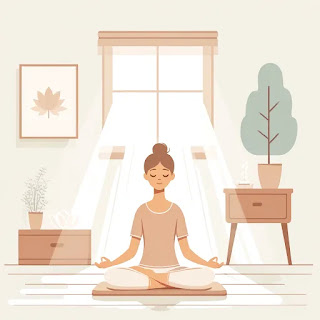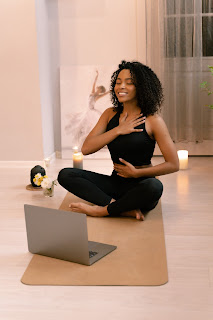Alternate Meditation Styles for Modern Life
Expanding the Definition of Modern Meditation
When most people think of meditation, they picture someone sitting cross-legged in perfect stillness, eyes closed, breathing deeply. While this traditional image represents one form of meditation, it’s not the only way to cultivate inner peace and self-awareness.
Many struggle with the idea of sitting still in silence. The good news? Meditation is not one-size-fits-all. Whether you find it difficult to focus, feel restless when sitting, or simply want to explore new ways to practice, there are alternative meditation styles that may better suit your needs.
From movement meditation to sound healing, Yoga Nidra, and insight meditation, modern meditation practices offer flexible, accessible ways to incorporate mindfulness into everyday life. Whether you’re looking to reduce stress levels, enhance emotional regulation, or improve physical health, there’s a method that aligns with your lifestyle.
This guide will explore diverse meditation techniques, highlighting their benefits and practical ways to integrate them into your routine. If you’ve ever felt that traditional meditation wasn’t for you, consider this an invitation to discover an approach that resonates with you.
Are you ready to break free from the idea that meditation requires stillness and silence? Let’s dive into the world of alternative meditation styles designed for modern life.
What is Meditation?
Meditation is a powerful practice that involves training your mind to focus, relax, and become more aware of your thoughts, feelings, and bodily sensations. It is an ancient practice that has been used for thousands of years to cultivate physical, emotional, and mental well-being. Meditation involves using various techniques, such as mindfulness, concentration, and visualization, to quiet the mind, calm the body, and connect with your inner self.
At its core, meditation is about being present in the moment, letting go of distractions, and tuning into your inner experience. It is a practice that can be done by anyone, anywhere, and at any time, making it a versatile and accessible tool for improving overall health and well-being.
Benefits of Meditation
The benefits of meditation are numerous and well-documented. Regular meditation practice has been shown to:
- Reduce stress and anxiety by promoting relaxation and calmness.
- Improve emotional regulation by increasing self-awareness and self-acceptance.
- Enhance cognitive function by improving focus, concentration, and memory.
- Boost mood by increasing positive emotions and reducing symptoms of depression.
- Improve sleep quality by promoting relaxation and reducing stress.
- Increase feelings of compassion, empathy, and understanding towards oneself and others.
- Support physical health by reducing chronic pain, inflammation, and improving immune function.
- Increase gray matter in the brain, leading to improved cognitive function and emotional regulation.
Overall, meditation is a powerful tool that can have a positive impact on both physical and mental health. By incorporating meditation into your daily routine, you can experience these benefits for yourself and improve your overall well-being.
Mindfulness Meditation: The Foundation of Awareness
At the heart of all meditation practices lies mindfulness—the ability to be fully present and aware of the present moment without judgment. Mindfulness meditation is one of the most well-researched and widely practiced forms of meditation, offering profound benefits for mental, emotional, and physical well-being.
What is Mindfulness Meditation?
Mindfulness meditation is an ancient practice rooted in Buddhist traditions, but it has been adapted for modern life. It involves training the mind to focus on breath, sensations, or thoughts without becoming attached or reactive. The goal is not to clear the mind completely but to observe thoughts as they arise and let them pass without getting caught up in them.
Why Mindfulness Meditation Works for Modern Life
It’s accessible anywhere – You don’t need a quiet space; you can practice on a walk, during a commute, or while eating.
It reduces stress and enhances focus – Studies show it lowers stress levels, improves attention, and supports mental clarity.
It cultivates emotional resilience – By observing thoughts without judgment, you develop greater emotional regulation and self-compassion.
Additionally, incorporating affirmations into your mindfulness practice can help generate positive feelings, shifting your mindset from negative thinking to positive patterns of thought and behavior.
How to Practice Mindfulness Meditation
Find a comfortable position – Sit, stand, or even lie down in a relaxed posture.
Focus on your breath – Pay attention to the sensation of breathing in and out.
Acknowledge distractions – When thoughts arise, gently bring your focus back to the breath.
Use an anchor – If focusing on breath feels difficult, try using a physical object, a sound, or a gentle body scan to stay present.
Consider incorporating affirmations about desired states or experiences to foster positive feelings and enhance your meditation practice.
Practice regularly – Even 5-10 minutes a day can improve self-awareness and emotional regulation.
Movement-Based Meditation: Meditate in Motion
For many, the idea of sitting still in meditation feels unnatural or even frustrating. If you find it difficult to focus in traditional seated meditation, movement-based meditation offers an alternative that aligns with the natural rhythms of your body.
Movement meditation integrates physical activity with mindfulness, making it an excellent choice for those who feel restless, have high energy levels, or prefer a more active approach to relaxation. By combining breath, movement, and awareness, this practice cultivates inner peace while keeping the body engaged.
What is Movement Meditation?
Unlike traditional stillness-based meditation, movement meditation uses gentle, flowing movements to bring awareness to the body and mind. It’s commonly found in practices like:
- Walking meditation – A slow, mindful way of moving that enhances self-awareness and presence.
- Yoga & Tai Chi – Ancient practices that blend breath, movement, and mindfulness to cultivate calmness and balance.
- Everyday movement – Even simple activities like stretching, dancing, or mindful chores can be forms of movement meditation when done with full awareness.
How to Practice Walking Meditation
Find a quiet space – A park, backyard, or even an open indoor area.
Walk slowly and deliberately – Pay attention to each step, the sensation of your feet touching the ground, and the rhythm of your breath.
Stay fully present – Observe your surroundings, listen to sounds, and notice how your body feels as you move.
Sync breath with movement – Try inhaling for three steps, exhaling for three, or finding a natural rhythm that feels calming.
Let go of distractions – If thoughts arise, gently return focus to the act of walking.
Why Movement Meditation Works for Modern Life
It’s ideal for restless minds – If sitting still feels impossible, movement provides a meditative experience without the pressure of stillness.
It integrates seamlessly into daily life – Whether walking to work, doing yoga, or engaging in mindful exercise, it doesn’t require extra time in your schedule.
It reduces stress and boosts focus – Research suggests that mindful movement can lower stress levels, improve mental clarity, and enhance emotional regulation.
Incorporating affirmations during movement meditation can also help generate positive feelings, further enhancing the benefits of the practice.
Movement-based meditation helps bridge the gap between physical activity and mindfulness, making it a perfect solution for those who need meditation that fits into an active lifestyle. Next, let’s explore another powerful practice: mantra meditation.
Mantra Meditation: The Power of Sound and Repetition
If your mind feels scattered, overwhelmed, or difficult to quiet, mantra meditation provides an effective way to anchor your focus. This practice uses repeated sounds, words, or phrases to create a meditative state, allowing the mind to settle naturally.
Similarly, using affirmations in mantra meditation can help generate positive feelings, influencing your mindset and fostering a shift from negative to positive thought patterns.
Unlike mindfulness meditation, which relies on silent observation, mantra meditation gives the mind a specific point of focus—making it especially beneficial for those who struggle with mental chatter or distraction.
What is Mantra Meditation?
A mantra is a repeated word, phrase, or sound used to enhance concentration and shift consciousness. The practice has roots in ancient traditions, particularly in Hinduism and Buddhism, where mantras are believed to have vibrational qualities that influence the mind, body, and nervous system.
Some mantras hold spiritual significance, while others are chosen for their calming effect. They can be spoken, whispered, or repeated silently in the mind.
How to Practice Mantra Meditation
- Choose a mantra – It can be a traditional Sanskrit mantra (e.g., “Om” or “So Hum”), a simple phrase (“I am at peace”), or even a word like “calm” or “relax.”
- Find a comfortable position – Sit, stand, or lie down in a quiet space.
- Repeat the mantra – Silently or aloud, syncing it with your breath if desired.
- Let go of distractions – If your mind wanders, gently bring it back to the mantra.
- Continue for a set time – Start with 5-10 minutes and gradually increase.
Popular Mantras and Their Meanings
- “Om” – Considered the universal sound of creation, symbolizing unity and harmony.
- “So Hum” – Translates to “I am that,” reinforcing connection with the universe.
- “Breathe in, breathe out” – A simple phrase to align mantra with breath.
Why Mantra Meditation Works for Modern Life
It’s excellent for active minds – The repetitive nature helps override mental noise and cultivate inner peace.
It can be practiced anywhere – At work, while commuting, or before bed for relaxation.
It enhances emotional resilience – Regular practice promotes self-awareness and positive emotions.
Variations of Mantra Meditation
Transcendental Meditation (TM) – Uses a personalized mantra to reach deep states of relaxation.
Chakra Meditation – Focuses on energy centers in the body, using specific sounds to promote balance.
Guided Mantra Meditation – Involves listening to a recorded mantra for ease and accessibility.
Mantra meditation offers a simple yet powerful way to bring calmness, clarity, and focus into daily life. If you find silence challenging, this method can anchor your awareness and enhance your meditation experience.
Next, let’s explore another unique technique: sound healing meditation.
Sound Healing: Meditation Through Vibration
For those who struggle with silent meditation or want a deeply immersive experience, sound healing meditation offers a powerful alternative. By using vibrational frequencies, this practice helps shift the brain into a meditative state, allowing for profound relaxation, emotional balance, and stress relief.
What is Sound Healing Meditation?
Sound healing involves listening to specific tones, frequencies, and rhythms that influence the nervous system and brainwave activity. It has roots in ancient traditions, including Tibetan singing bowls, chanting, and Nada Yoga, which views sound as a path to spiritual awakening.
Incorporating affirmations into sound healing meditation can also help generate positive feelings, enhancing the overall experience and benefits.
Modern sound healing can include:
Singing bowls and gongs – Producing deep, resonant tones that guide the mind into a meditative state.
Binaural beats – Using two slightly different frequencies to encourage relaxation or focus.
Mantra chanting – Repeating sacred sounds to stimulate vibrational healing.
Nature sounds – Listening to flowing water, birds, or the wind for natural calming effects.
Sound healing is a deeply immersive meditation experience that allows the mind and body to enter a state of harmonywith minimal effort. If you’re looking for an alternative to silent or movement-based meditation, this technique can be an excellent way to experience inner peace and positive emotions effortlessly.
Yoga Nidra: The Art of Conscious Sleep
If you’re seeking a meditation practice that provides deep relaxation, restores the nervous system, and requires no effort, Yoga Nidra may be the perfect solution. Often called “yogic sleep,” this practice guides you into a state between wakefulness and sleep, where the body rests completely while the mind remains aware.
Unlike traditional meditation, where focus and awareness are actively maintained, Yoga Nidra allows you to surrender fully into relaxation. It is a powerful tool for those struggling with stress, anxiety, sleep issues, or burnout.
What is Yoga Nidra?
Yoga Nidra is a guided meditation technique that leads the mind through a structured relaxation process. It brings the body into a sleep-like state while keeping the mind alert, accessing deeper layers of consciousness.
This practice involves:
A body scan – Moving awareness through different parts of the body to release tension.
Breath awareness – Slowing the breath to induce a deep state of calm.
Visualization – Using mental imagery to support healing and relaxation.
Sankalpa (Intention setting) – A personal affirmation or goal repeated during the practice. Repeating affirmations during Yoga Nidra can help generate positive feelings, further enhancing the relaxation and healing process.
Progressive Relaxation: Systematic Stress Release
In a world where stress accumulates in the body as muscle tension, progressive relaxation offers a simple yet highly effective way to release stress and cultivate deep relaxation. Unlike other forms of meditation that focus on breath or awareness, this practice systematically relaxes each muscle group, helping the body and mind unwind.
Incorporating affirmations into progressive relaxation can help generate positive feelings, further enhancing the stress-relief and relaxation benefits.
What is Progressive Relaxation?
Progressive relaxation, also called progressive muscle relaxation (PMR), involves intentionally tensing and releasingdifferent muscle groups to create a contrast between tension and relaxation. This technique is widely used for:
Reducing stress and anxiety, Lowering blood pressure, Enhancing sleep quality, Easing physical discomfort and tension headaches
It works by shifting the nervous system from a state of alertness to deep relaxation, helping to calm both body and mind.
How to Practice Progressive Relaxation
Find a quiet, comfortable space – You can sit or lie down.
Start at the feet – Tense the muscles in your feet for 5-10 seconds, then release.
Move upward through the body – Progressively tense and relax the legs, abdomen, chest, arms, shoulders, neck, and face.
Focus on the sensation of release – Observe how relaxation spreads after each muscle group is released.
Breathe deeply – Sync deep, slow breaths with the relaxation process.
Why Progressive Relaxation Works for Modern Life
Quick stress relief – A 10-minute session can significantly lower stress levels.
Helps with sleep – By relaxing the entire body, it makes it easier to fall asleep and stay asleep.
Improves body awareness – Many people hold tension without realizing it; this practice helps identify and release it.
Best for:
Individuals struggling with chronic tension, anxiety, or difficulty sleeping.
Those who prefer a structured, step-by-step relaxation process.
Anyone looking for a physical technique to complement mindfulness meditation.
Progressive relaxation is an easy, accessible meditation practice that delivers immediate benefits. If you’re looking for a straightforward way to unwind, this method is a great addition to your regular practice.
Finding the Right Meditation Style for You
With so many meditation techniques available, finding the right one can feel overwhelming. The key is to choose a practice that aligns with your lifestyle, personality, and needs. Whether you’re seeking stress relief, mental clarity, emotional balance, or deep relaxation, there’s a meditation style that fits seamlessly into your daily life.
Experiment and Adapt
Try different techniques—what works for one person may not work for another.
Mix and match—combine different styles based on your needs (e.g., a morning movement meditation and an evening Yoga Nidra session).
Be patient—it may take time to discover what resonates most with you.
Meditation isn’t about forcing yourself into a rigid practice—it’s about finding a method that enhances your well-being and fits naturally into your routine.
Meditation as a Personal Journey
Meditation is not a one-size-fits-all practice—it’s a deeply personal journey of self-discovery, awareness, and relaxation. Whether you resonate with the stillness of mindfulness meditation, the rhythm of movement-based meditation, the soothing sounds of sound healing, the deep relaxation of Yoga Nidra, or the self-awareness of insight meditation, there is a meditation style that fits your needs and lifestyle.
The key is to approach meditation with curiosity and flexibility. Some days, you may crave stillness; other days, movement may be the best way to reconnect with yourself. By exploring different meditation styles, you give yourself the freedom to adapt your practice to your emotions, energy levels, and daily challenges.
Your Next Step
Choose one meditation style from this guide that resonates with you.
Commit to a short daily practice—even 5-10 minutes can make a difference.
Reflect on your experience—notice how your body, mind, and emotions respond.
Meditation is not about perfection—it’s about presence. Find the practice that works for you, and allow it to bring more calm, clarity, and balance into your life.
Are you ready to begin your meditation journey? Try a new technique today and see how it transforms your state of mind.


